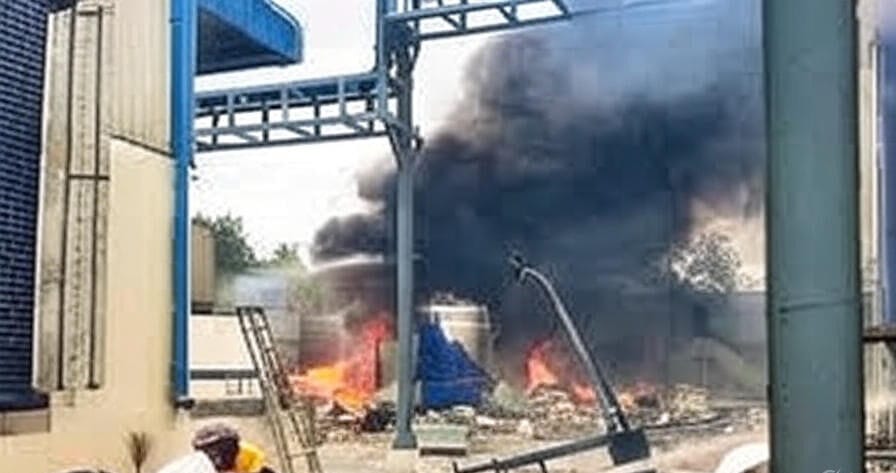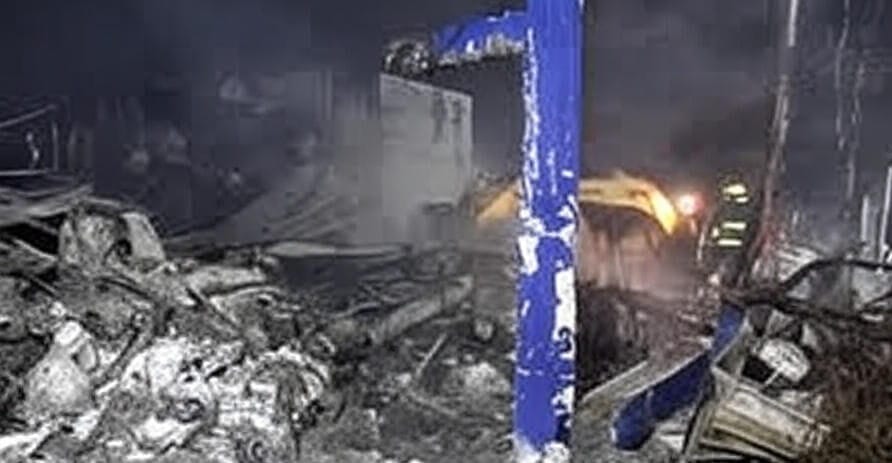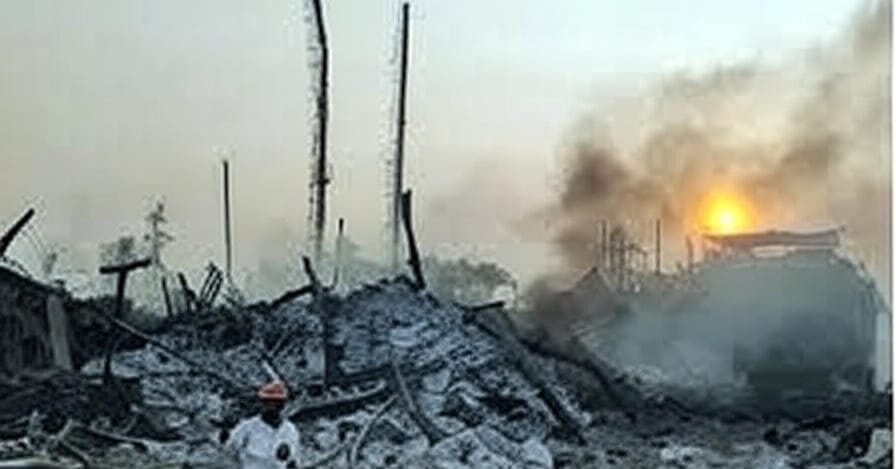
Telangana, India – July 1, 2025 – A devastating explosion and ensuing fire ripped through a pharmaceutical manufacturing facility in Telangana today, claiming the lives of at least 36 individuals and injuring approximately three dozen more. The incident, identified as occurring at Sigachi Industries Pvt. Ltd.in Pashamylaram, Sangareddy zone, marks one of the deadliest mechanical mishaps inside the district in afterward memory and has touched off a basic national conversation on mechanical security, administrative authorization, and the broader proposals for India’s burgeoning pharmaceutical division.
The Catastrophe Unfolds
The blast happened within the early hours of July 1st.Eyewitnesses reported a thunderous blast that reverberated through nearby communities, followed by thick plumes of black smoke and rapidly spreading flames engulfing the factory. The force of the explosion was so immense it reportedly shattered windows in surrounding areas and caused widespread panic.
Preliminary investigations suggest the blast may have originated in a spray dryer unit within the facility, a section crucial for converting raw materials into powdered drugs. Experts speculate that a pressure build-up or a malfunction within this unit, potentially exacerbated by fine dust particles of microcrystalline cellulose (a chemical handled at the site), could have triggered the catastrophic event.
Emergency services, including fire brigades, police, and medical teams, were deployed swiftly. However, the scale of the blaze and the structural collapse of parts of the building presented significant challenges to rescue efforts. Firefighters battled the inferno for several hours, while rescue teams worked tirelessly to extricate survivors and recover the remains of those trapped under the debris.
By mid-morning, authorities confirmed a provisional death toll of 36, with 36 individuals hospitalized with injuries ranging from severe burns to respiratory issues. The challenging errand of recognizing the expired has started, with numerous bodies burnt past acknowledgment, requiring DNA testing.Numerous of the casualties are acknowledged to be roaming laborers.

Profound Impact on Community and Industry
The catastrophe has cleared out the nearby community in mourning.The catastrophe has cleared out the neighborhood community in grieving.desperately at the factory site and hospitals, seeking information about their loved ones, many of whom were primary income earners. The incident has evoked widespread grief and outrage, fueling calls for accountability and immediate support for affected families.
Telangana’s pharmaceutical industry, a significant contributor to the state’s economy and a major global supplier of generic drugs and Active Pharmaceutical Ingredients (APIs), now faces intense scrutiny. This devastating event highlights the inherent risks associated with handling hazardous materials in manufacturing processes and raises critical questions about the adequacy of safety standard enforcement across the sector, particularly in facilities dealing with volatile chemicals.
Official Response and Ongoing Investigation
The Telangana state government has swiftly committed to a thorough investigation. Chief Minister A. Revanth Reddy has extended condolences to the victims’ families and announced financial assistance of ₹10 lakh (approximately $12,000) for the next of kin of each deceased worker, alongside comprehensive medical support for the injured. A high-level committee has been constituted to probe the explosion’s cause, with a mandate to submit its findings within two weeks and recommend preventative measures.
Both central and state government authorities are coordinating efforts, with the National Disaster Response Force (NDRF) assisting in rescue operations. Experts from the Directorate General of Factory Advice Service and Labour Institutes (DGFASLI) are expected to join the investigation. Initial inquiries will focus on crucial aspects such as compliance with safety regulations, equipment maintenance, and the handling and storage of hazardous substances at the facility.Sigachi Businesses Restricted has confirmed the suspension of operations at the Pashamylaram plant for 90 days.

Broader Implications and Urgent Calls for Reform
This tragedy has reignited the critical debate surrounding industrial safety in India. Rapid industrialization in the country has often outpaced the implementation of robust regulatory frameworks. Workplace accidents, particularly in the chemical and pharmaceutical industries, are unfortunately not uncommon, consistently exposing deficiencies in safety audits, worker training, and emergency preparedness. The Telangana blast underscores the pressing require for stricter authorization of the Manufacturing plants Act, 1948, and related directions, which order comprehensive security measures for dangerous businesses.
Industry experts and advocacy groups are demanding comprehensive reforms, including:
- Normal and exacting security reviews over all high-risk fabricating units.
- Mandatory and continuous training programs for workers handling dangerous materials.
- The adoption of advanced technologies to monitor and mitigate risks more effectively.
- More noteworthy straightforwardness in detailing security infringement and holding companies responsible for slips.
- Ensuring adequate compensation and rehabilitation for affected families, many of whom face economic hardship.
Recent amendments to India’s labor laws, including the Occupational Safety, Health and Working Conditions Code, 2020, and updated Good Manufacturing Practices (GMP) under Schedule M of the Drugs and Cosmetics Rules, 1945, aim to enhance safety and quality standards. However, the Telangana incident clearly demonstrates that the challenge lies not only in establishing regulations but also in their rigorous and consistent implementation and enforcement.
A Sobering Call to Action
As the examination into the Sigachi Businesses catastrophe unfurls, the center must stay on conveying equity for the casualties and building up strong components to avoid such horrendous occasions within the future.The Telangana factory explosion serves as a somber and powerful call to action for policymakers, industry leaders, and regulators. Collaborative efforts are essential to strengthen safety protocols, significantly invest in worker training, and ensure unwavering oversight of high-risk industries, ultimately prioritizing human safety over economic gains and building a safer, more resilient industrial landscape for India.





